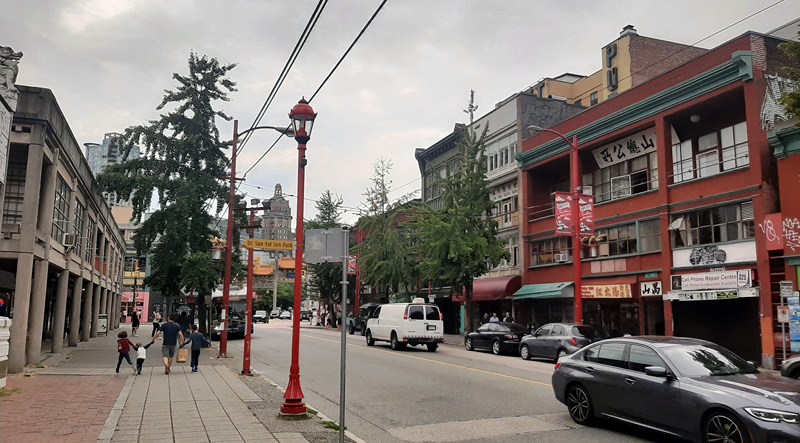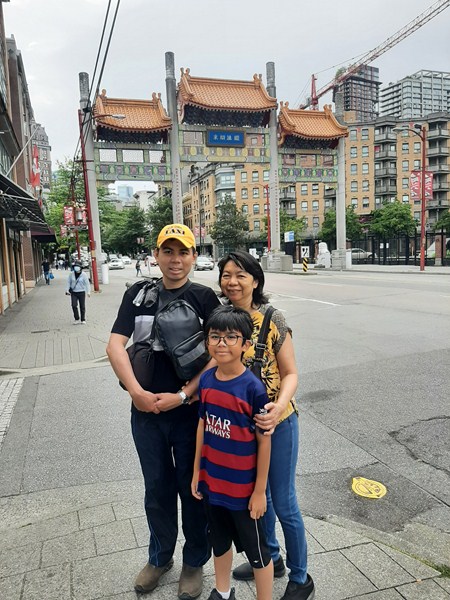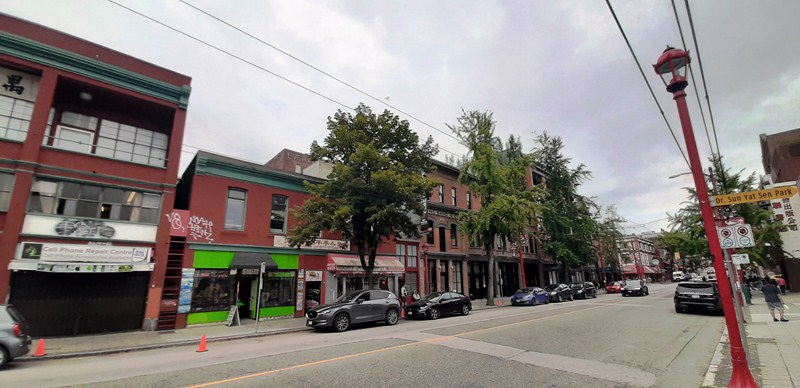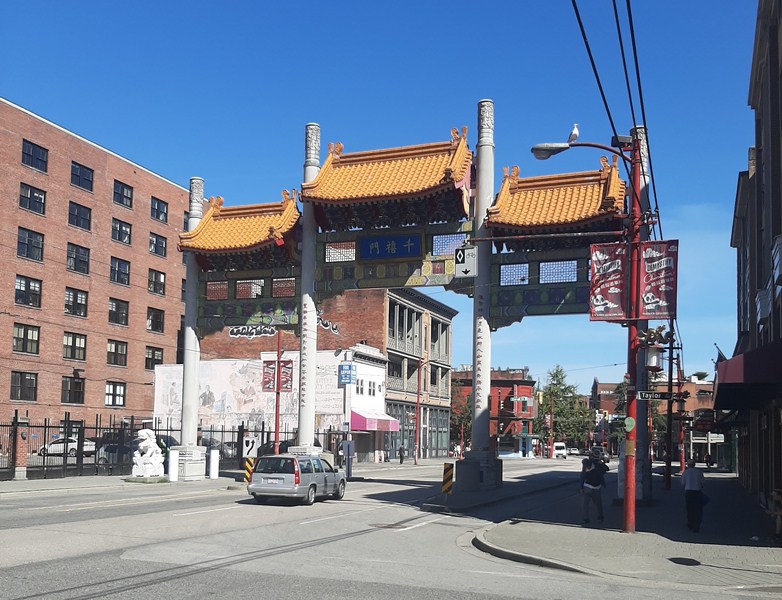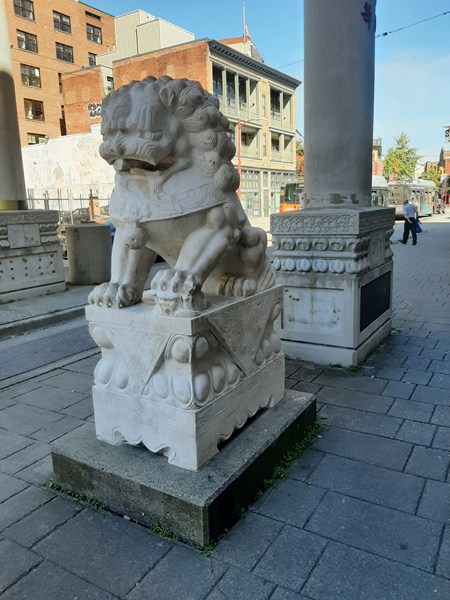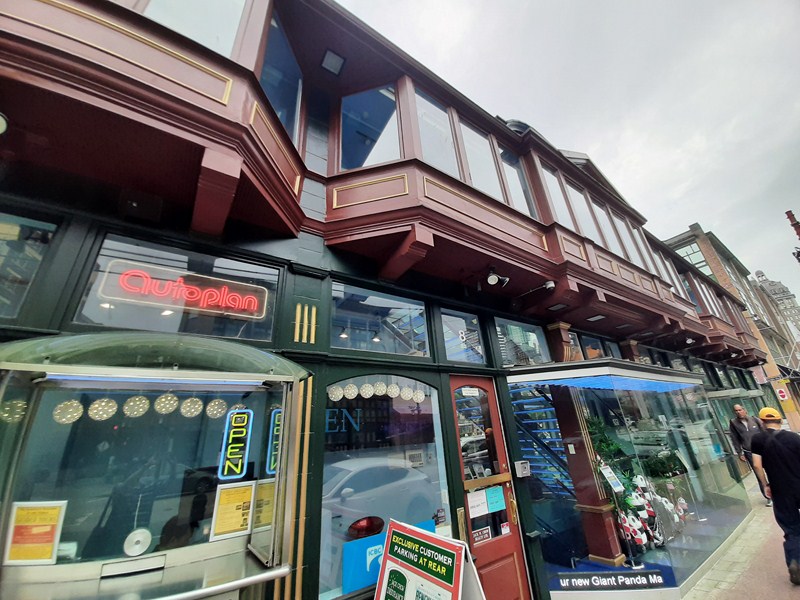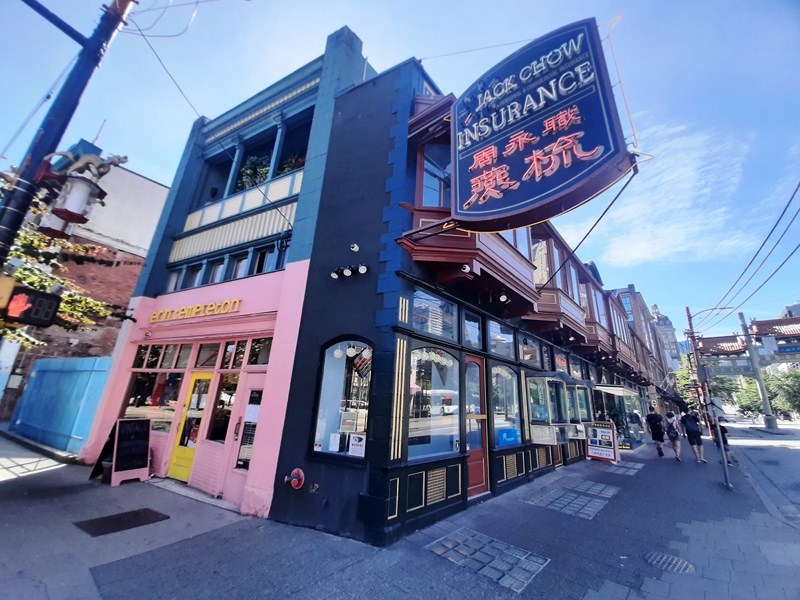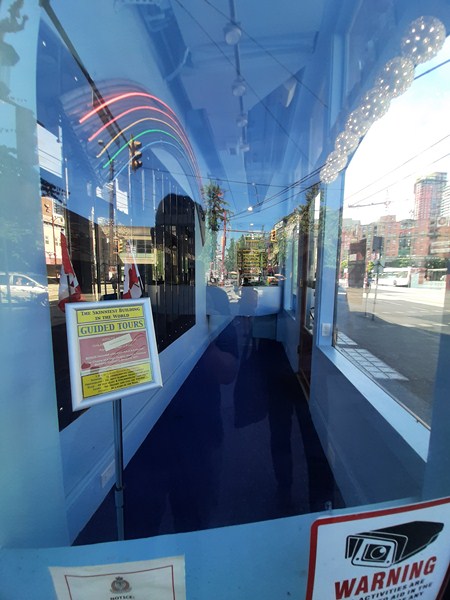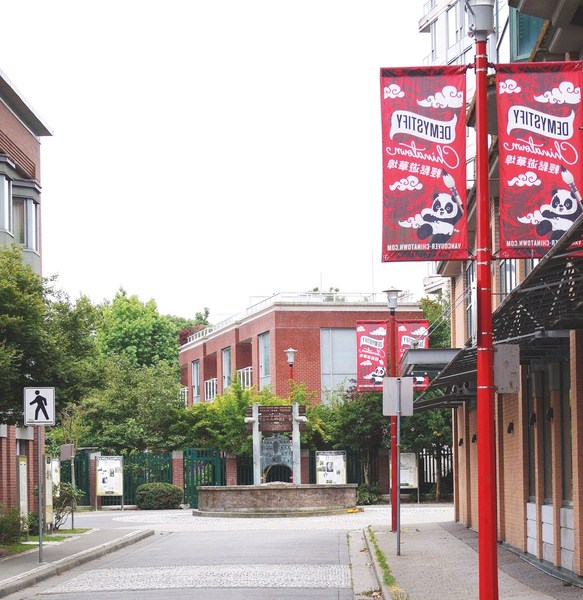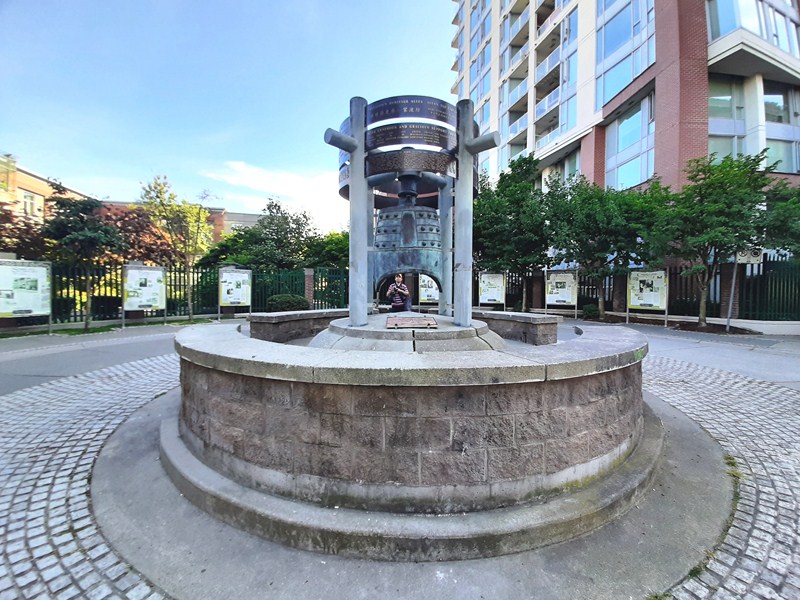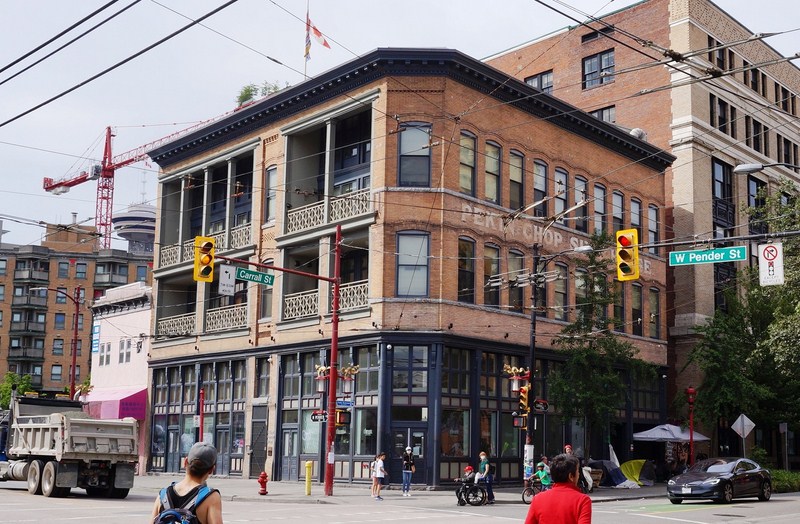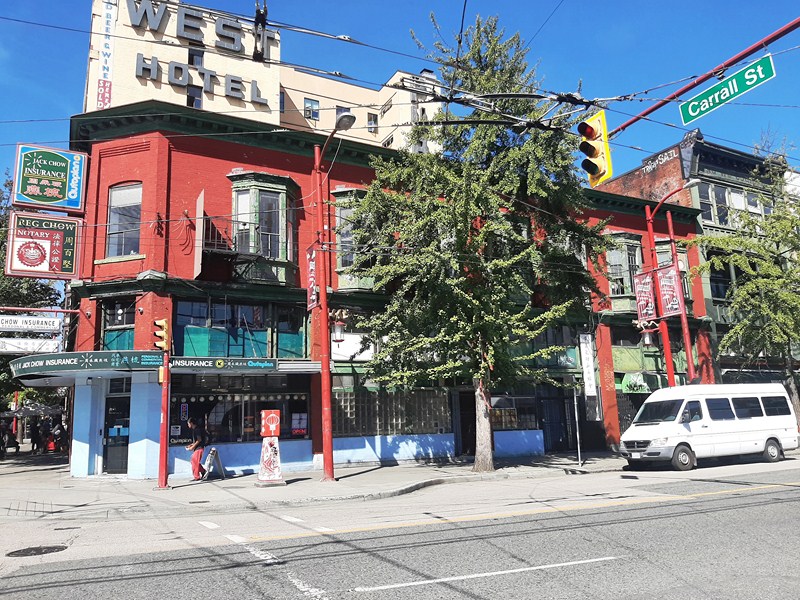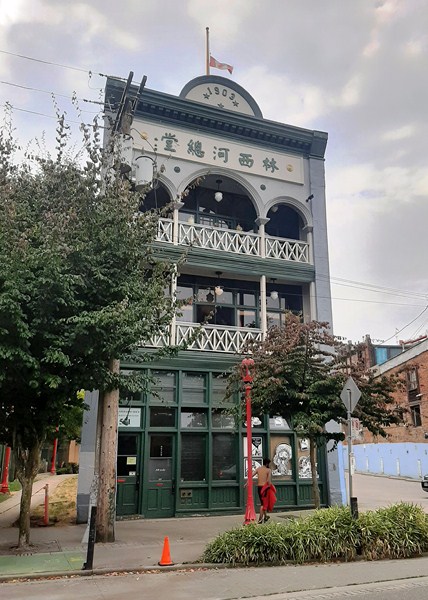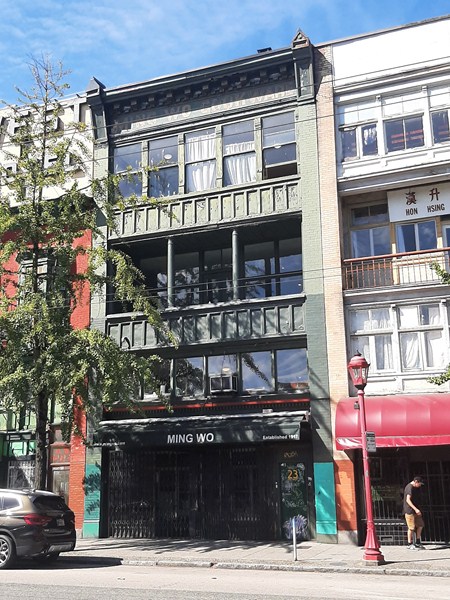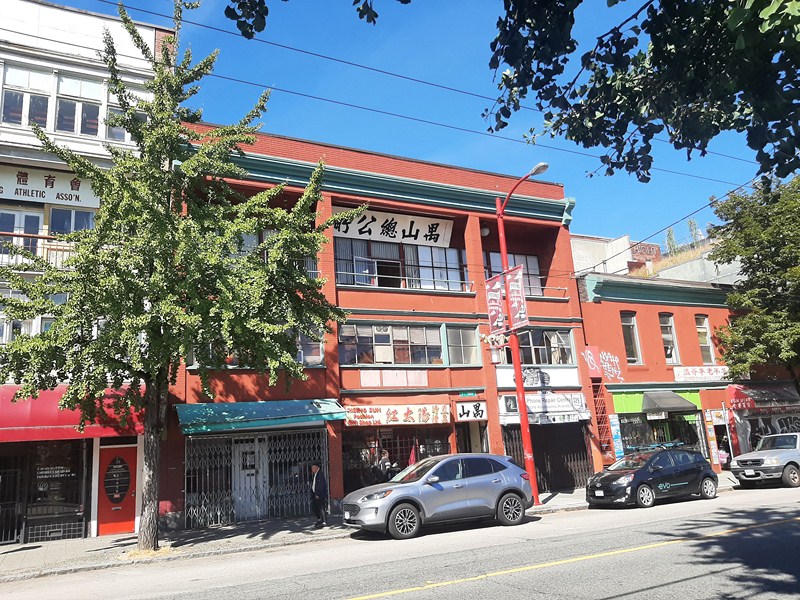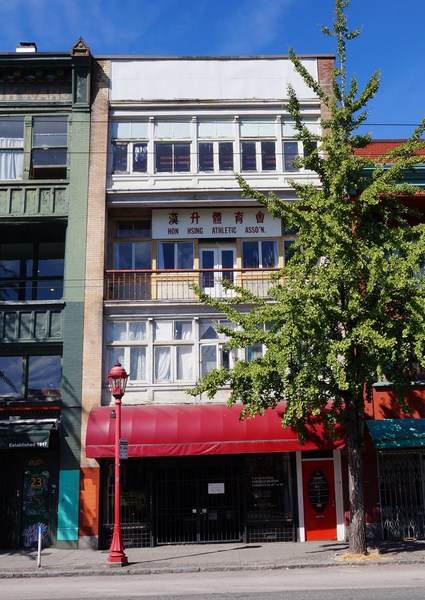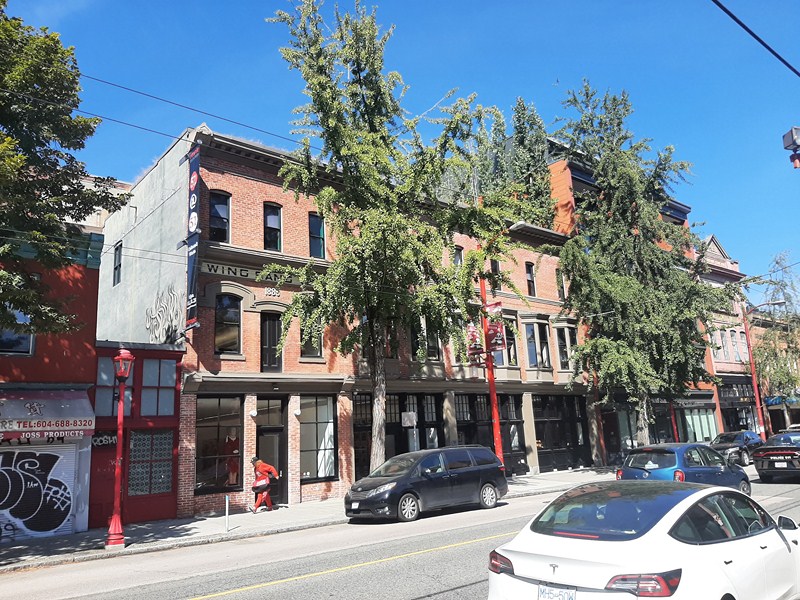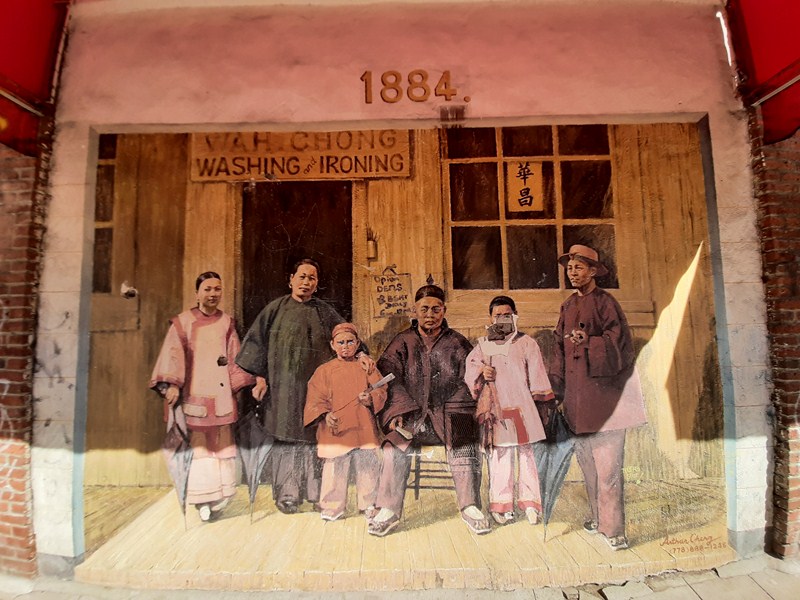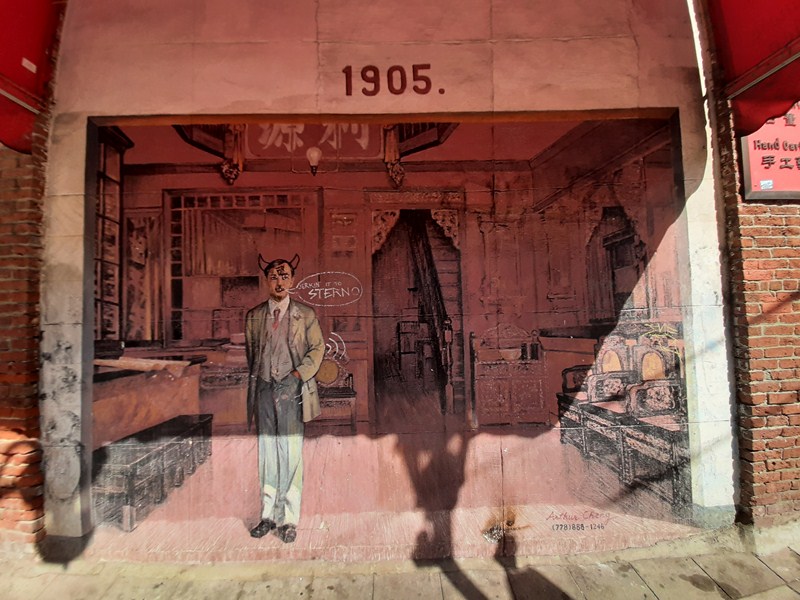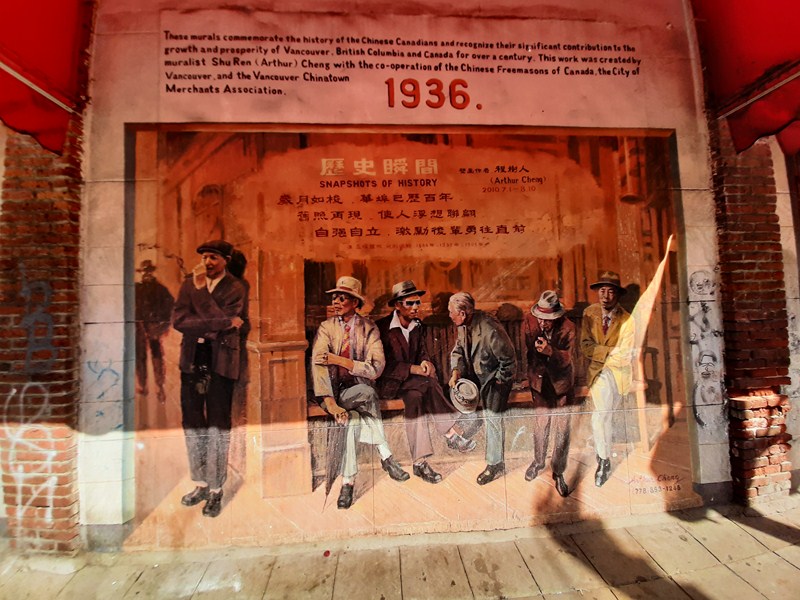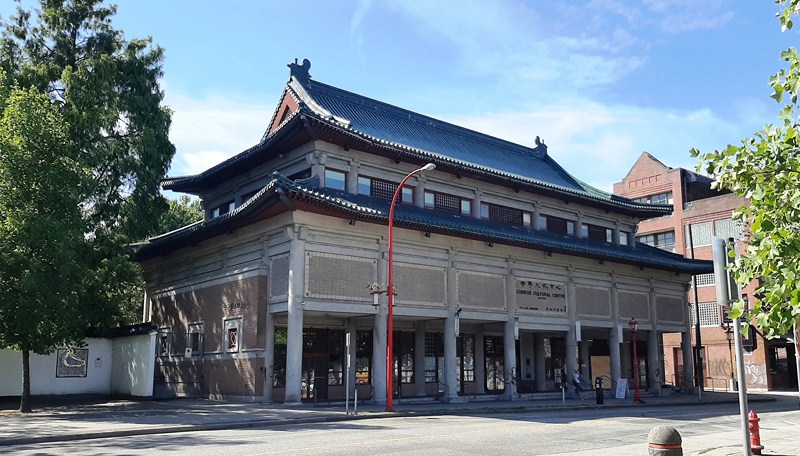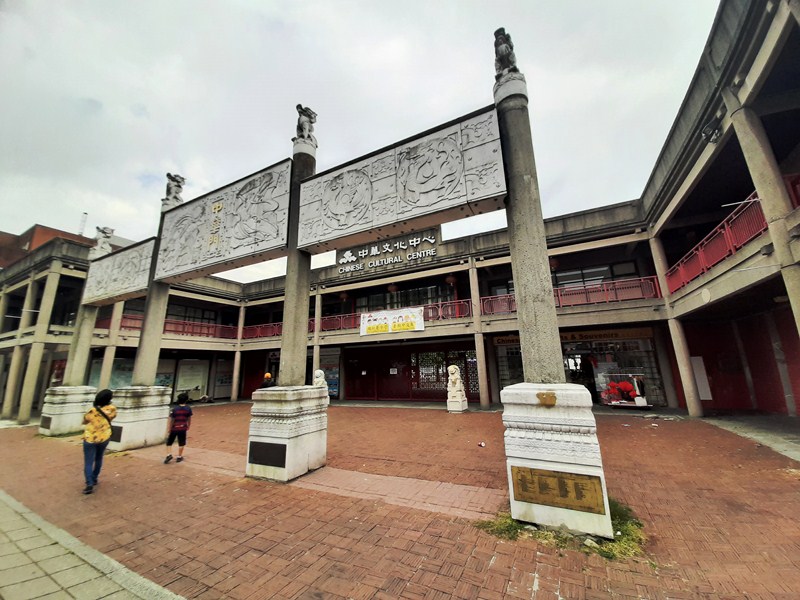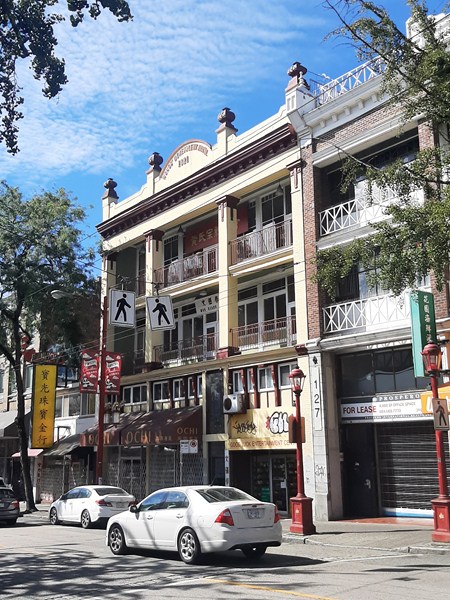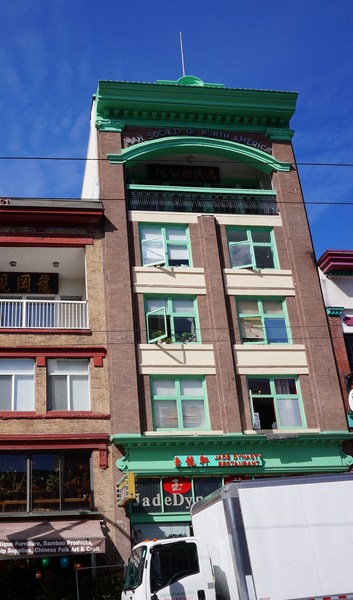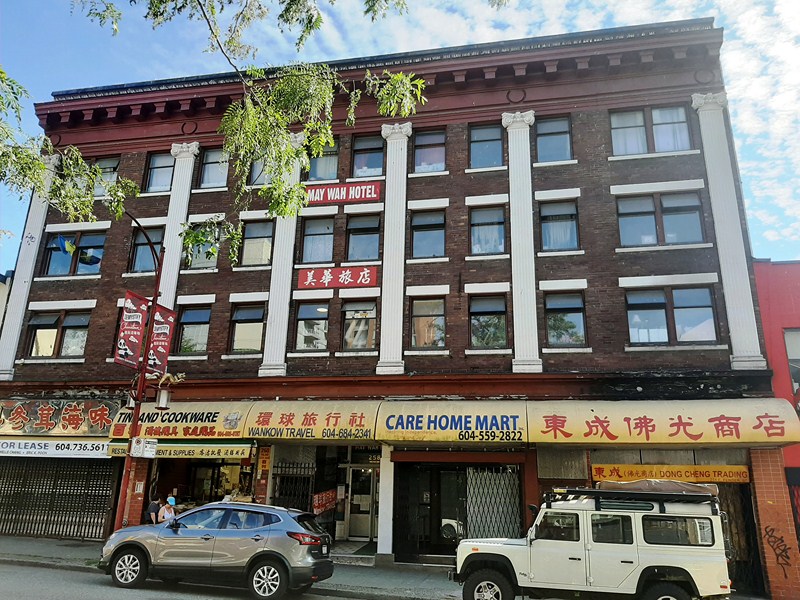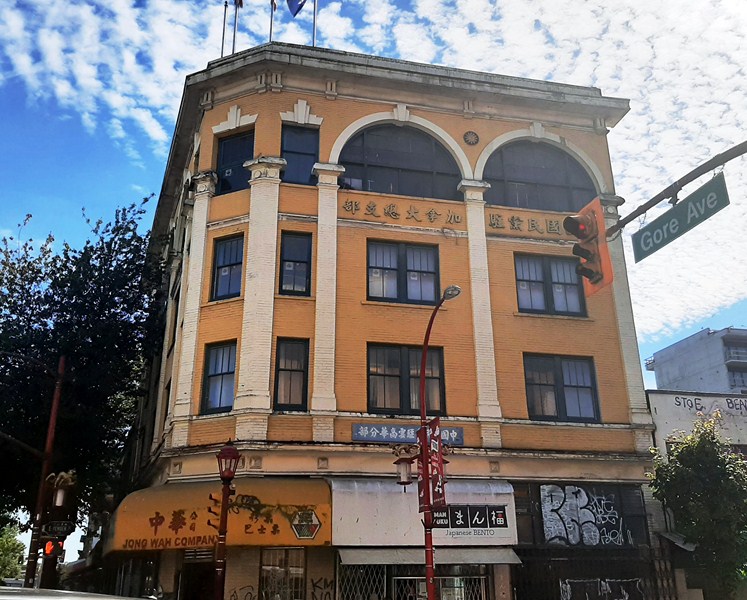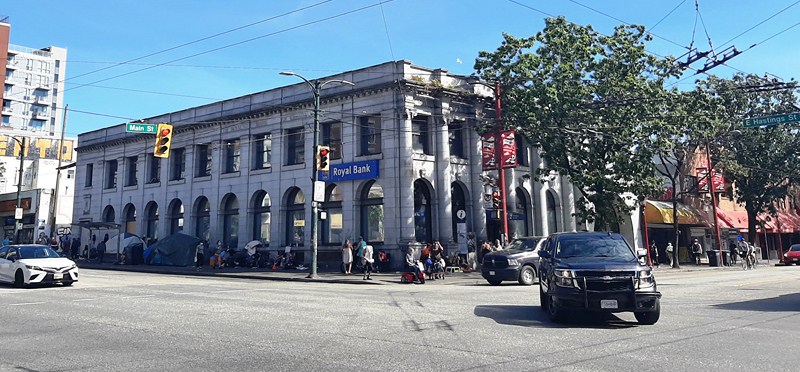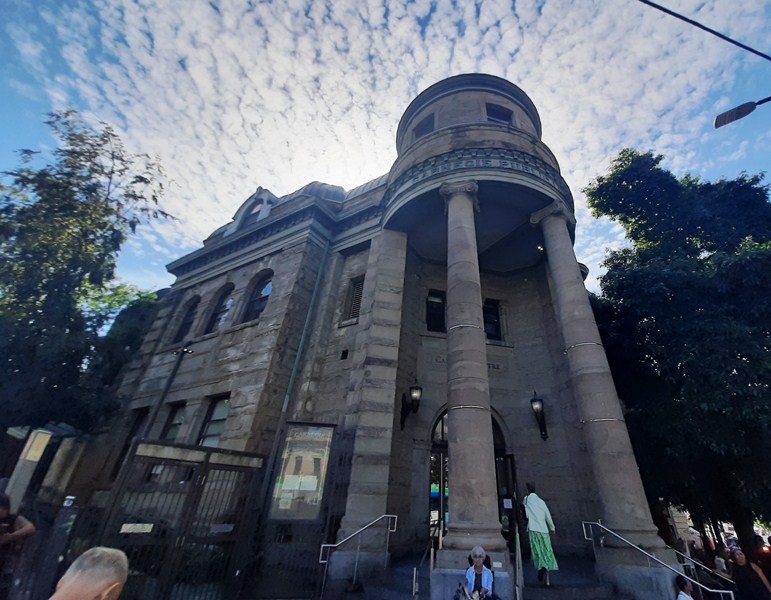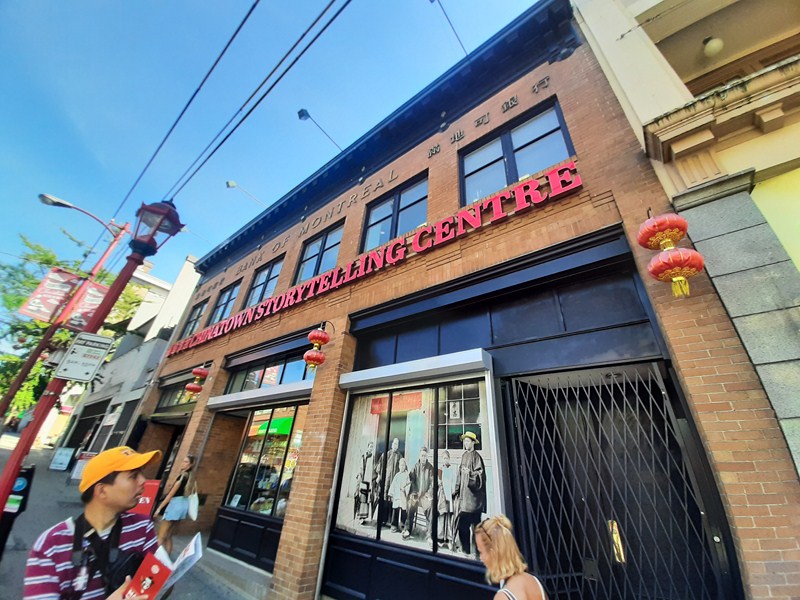On our 35th day in Vancouver, Jandy and I returned (the first was in August 10 when we visited the Dr. Sun Yat Sen Classical Chinese Garden and Park) to Vancouver Chinatown, Canada‘s largest Chinatown, which is home to important cultural heritage assets and many community organizations with deep historical roots in Vancouver and Canada.
Check out “Dr. Sun Yat Sen Classical Chinese Garden and Park”
Across 130 years of change, the district, one of the most significant urban heritage sites in Canada, has experienced recent decline as newer members of Vancouver’s Chinese community dispersed to other parts of the metropolitan area. However, it still maintains a strong community and cultural identity.
Centered around Pender Street, this popular tourist attraction is one of the largest historic Chinatowns in North America. Its approximate borders, as designated by the City of Vancouver, are the alley between Pender and Hastings Streets, Georgia Street, Gore Avenue and Taylor Street. Unofficially, the area extends well into the rest of the Downtown Eastside.
The principal areas of commercial activity are Main, Pender and Keefer Streets. Chinatown is surrounded by Gastown to the north, the Downtown financial and central business districts to the west, the Georgia Viaduct and the False Creek inlet to the south, the Downtown Eastside and the remnant of old Japantown to the northeast, and the residential neighborhood of Strathcona to the southeast.
Due to the large ethnic Chinese presence in Vancouver (especially represented by mostly Cantonese-speaking multi-generation Chinese Canadians and first-generation immigrants from Hong Kong), the city has been referred to as “Hongcouver.” In recent years, however, most immigration has been Mandarin-speaking residents from Mainland China.
In 2011, the neighborhood was designated a National Historic Site of Canada. Many of the substantial buildings here were built in a distinct “Chinatown architectural style,” with vertical proportions, four storeys (with one or more of the upper floors featuring recessed balconies and others fully glazed) and with a classical metal cornice.
Our tour of Chinatown began when we entered the Chinatown Millennium Gate which straddles Pender Street, near the intersection with Taylor Street. It marks the western boundary of Chinatown. Designed by local architect Joe Y. Wai (1940–2017), whose work and contribution can be seen throughout Chinatown.
The gate was approved on September 20, 2001 and erected in 2002 at the same site as a temporary wooden arch built to celebrate the 1901 royal tour by the Duke and Duchess of Cornwall and York. The Millennium Gate recalls gates you may find at the entrances to villages in southern China. On the eastern face are Chinese characters which read “Remember the past and look forward to the future.”
Past the gate, at the right, is the Sam Kee Building (8 West Pender Street) credited, by the Guiness Book of World Records, as “The world’s shallowest (not the narrowest) freestanding building in the world.” The building’s namesake, the Sam Kee Company, was run by successful business leader Chang Toy, one of the wealthier merchants in turn-of-the-20th-century Chinatown.
One of the largest Chinese merchant firms in Vancouver, the company, established in 1888, manufactured charcoal, operated a herring saltery in Nanaimo and contracted Chinese labor to various industries. It also imported and exported food products to and from China, served as agents for the Blue Funnel Steamship Line and possessed sizable real estate holdings throughout Greater Vancouver.
In 1903, Chang Toy bought the standard-sized lot for the building. The lot was the previous home to Shanghai Alley, an early Vancouver red light district which collaboratively hosted 105 brothels with Canton Alley. However, in 1912 the city widened Pender Street, expropriating (which Toy’s lawyers negotiated a fair market price) all but 6 ft. of the Pender Street side of the lot. In 1913, he hired architects Bryan and Gillam to design this narrow steel-framed free-standing building for offices, business and bath houses on the remaining narrow 6-ft. strip, costing just $8,000 to erect.
To maximize use of the property, the building basement (such basements in Vancouver were once common and zoned as “areaways”), much wider than the rest of the building, extended under the sidewalk and housed public baths. On the ground floor were shops while offices were located above. In the 1980s, the building was rehabilitated for Jack Chow and completed in 1986. Designed by Soren Rasmussen Architect, the glass prisms that were set in a tight grid across the sidewalk to light the basement, were replaced with modern glass.
At the end of Shanghai Alley (or Chinatown Heritage Alley), near West Pender Street, is the Allan Yap Circle. Here, hangs a replica Western Han Dynasty bell, a gift to Vancouver from sister city Guangzhou and a symbol of the historic connection between the two cities and their urban settlements, which was dedicated on June 26, 2001.
Also on this corner is S.U.C.C.E.S.S., created in Vancouver in 1973 to assist new Canadians of Chinese descent to overcome language and cultural barriers. The organization is now one of BC’s largest social services organizations with locations also in Taiwan and Korea.
Across the Sam Kee Building is the Chinese Freemasons Building (3-9 West Pender Street). Originally the site of a Methodist church (in 1888, the first to minister to the Chinese community in Vancouver) from 1889 until 1907 when the Chee Kung Tong (a traditional Chinese fraternal organization which provided welfare assistance to the earliest Chinese immigrants during the Fraser Canyon Gold Rush of 1858) constructed the current building. In 1920, the organization adopted the English name the Chinese Freemasons in order to forge links with European Freemasonry.
Like many overseas organizations, it was deeply involved in Chinese politics. The building was even mortgaged to help fund Dr. Sun Yat-Sen’s (whose efforts the Freemasons supported to bring democracy to China) 1911 rebellion. The building also served as the original home of the successful business, Modernize Tailors, one of many tailors (a profession available to Chinese Canadians in an era of employment restrictions in the area). After a fire in 1975, the building was repaired and, in the early 2000s, a careful restoration was completed by Joe Wai for the Wong family.
Facing the Freemason Building is the two-storey, brick Chinese Times Building (1 East Pender Street). Commissioned by successful businessman and community leader Yip Sang, it was designed in 1901 by architect W.T. Whiteway. From the 1930s to 1990s, the building was home to The Chinese Times, an important source for local and Chinese political news, managed by the Chinese Freemasons.
When the newspaper moved in, a mezzanine floor was added to accommodate the typesetters who used the 5,000 different Chinese characters to create each edition. Since the typesetters sat all day, the ceiling is only 6 ft. high. Through the ground floor windows, the printing presses could be viewed and men gathered to read the paper pasted to the Carrall Street wall.
Around the corner, from Sam Kee Building, is the Lim Sai Hor (Kow Mok) Benevolent Association Building (525-531 Carrall Street). The earliest surviving association building, it was constructed in 1903 for the Chinese Empire Reform Association (focusing to bring about political reform in China, its members included Chang Toy, Yip Sang and Alexander Won Cumyow, the first person of Chinese descent born in Canada), the most influential association in Chinatown at the time. At its height (it faded with the fall of the Qing Empire and the emergence of the Dr. Sun Yat-Sen-led republic in 1911), the building housed a school and published a newspaper.
In 1926, the newly formed Lim Sai Hor (Kow Mok) Association rented the space and, in 1945, bought the building to serve as headquarters for its members (defined by the common surname Lim or Lam). In 2017, a rehabilitation project restored the exterior balcony details, lighting and other distinctive features that reflect the exchange between China and Canada, influencing the traditional village house style and blending it with modern western design trends. The use of green as an accent color in the interior and exterior is a nod to the members’ surname which means “forest.” The building also houses an ancestral altar, built in 1993 and used by society members.
The four-storey, brick Ming Wo Building, at 23 East Pender Street, was designed by W.H. Chow, the only identified Chinese-Canadian architect practicing at the time, and built in 1913 for Wong Soon King, a real estate developer and co-founder of the Chinese Board of Trade.
In 1917, opened as Ming Wo Hardware store, making it the oldest retail outlet in Chinatown and one of the oldest in the city. The company was founded by Wong Chew Lip, who moved to Canada from Kwong Chow (Canton) in southern China about 1908. The Wong Chew Lip family descendants lived above the store. The company supplied Chinatown’s businesses and evolved into a restaurant supply business that has numerous cookware stores in Metro Vancouver.
The use of space within the building conforms to the representative pattern in Chinatown. On the ground floor are the retail space while on the upper floors are offices, meeting rooms and small residential rooms designed to accommodate “married bachelors.” In the first third of the twentieth century, organizational tenants included the Kong Chow Benevolent Association and the Hong Kong Club.
Further along East Pender Street is the three-storey, brick Yue Shan Society Building (33-39 East Pender Street). Designed in 1920 by architect W.H. Chow (who also designed many others for the community from 1908 to 1922), it became home, in 1943, to the Yue Shan Society, an organization formed in 1894 for people from Poon Yue County near Guangzhou. The Society also owns the two-storey brick Hon Hsing Athletic Association Building to the right (dating to 1889) and the three-storey residential building at the rear of the property facing Market Alley.
The Wong’s Benevolent Association/Hon Hsing Athletic Club Building, at 29 East Pender Street, was designed by architect R.J. MacDonald and built 1910 for the Wong’s Benevolent Association. It is home to the Hon Hsing Athletic Club, a Chinese martial arts (a crucial element of intangible cultural heritage in Chinatown and a fundamental part of the performance of the lion dances that anchor the annual Chinese New Year Parade) school established in 1938.
The two-storey, brick Wing Sang Building, at 51 East Pender Street, part of the Yip family complex, is the oldest (built in 1889) standing building in Chinatown. It served as the office and ticket agency of Vancouver businessman Yip Sang (instrumental in a number of social endeavors, including bringing the CBA to Vancouver and establishing a Chinese hospital, and he was a lifetime governor of the Vancouver General Hospital).
Founded in 1888, the Wing Sang Company was engaged in a variety of enterprises including labor contracting and a trans-Pacific import and export business, and was the Canadian Pacific steamship ticket agency for travel to China. The door, on the second floor, opened to the upstairs warehouse (goods were hoisted in and out through that door). In 1901, the complex grew to accommodate a growing family and business with an expansion on top and besides the original building. The family residence was located at the upper floors while the ground floor was home to a variety of businesses, including a saloon and a cigar store. In 1912 a six-storey building, facing Market Alley, was added to the complex to accommodate the growing extended family. Today, this building houses offices and the Rennie Museum.
The Chinese Benevolent Association of Vancouver (CBA) Building, at 104 -108 East Pender Street, was built in 1909 by Vancouver’s branch of the CBA (formed in 1895). Its architectural style, a good example of the influences from southern China, features recessed balconies, ornate ironwork and decorative tiles. .
Snapshots of History, a three-panel mural that decorates the side of a building at 490 Columbia Street (northwest corner of Pender & Columbia), was installed in 2010 by Shu Ren Cheng. One panel depicts the 1884 Goon family.
The other two panels of the mural feature a reproduction of a 1905 photo of a silk merchant in Chinatown and a rendering of a 1936 photo of men sitting outside a barber shop at Carrall and Pender.
The Chinese Cultural Centre Museum & Archives, at 555 Columbia Street, provides a home for Chinese heritage and culture. A competition-winning design by James K.M. Cheng Architects and Romses Kwan & Associates, the concrete building, built in 1986, incorporates the elements of traditional Chinese post and beam architecture. The Museum and Archives building, built in 1998 as the home to the Chinese Canadian Military Museum, was designed by Joe Wai in a style inspired by the Ming Dynasty, with its flared eaves, screened windows and tile roof.
The Chinese Railroad Workers and Chinese Veterans Memorial, at the Chinatown Memorial Plaza, at the northeast corner of Keefer Street and Columbia Street, recognizes those who built the Rocky Mountain and Fraser Canyon portions of the Canadian Pacific Railway (1881-1885) and those who fought in World War II (1939-1945). On Remembrance Day, a ceremony for Chinese Canadian veterans takes place at the site.
The China Gate, next to the Chinese Cultural Centre, facing Pender Street, near the intersection with Carrall Street, was donated to the City of Vancouver by the Government of the People’s Republic of China and was originally on display during the Expo 86 world’s fair. After being displayed at its current location for almost 20 years, the gate was rebuilt and received a major renovation of its façade employing stone and steel. Funding for the renovation came from government and private sources. On October 2005, during the visit of Guangdong governor Huang Huahua, the renovated gate was unveiled.
Back at East Pender Street is the Wong’s Benevolent Association (Mon Keang School) Building, at 121 East Pender Street. Originally a two-storey building developed in 1908 by Loo Gee Wing, in 1921, it became the headquarters for Wong’s Benevolent Association, a newly amalgamated association that was formed out of three existing organizations, who had the top floor removed and replaced with two new storeys designed by architects G.L. Southwell and J.A. Radford.
In 1925, the Mon Keang School, teaching the Chinese language and customs to the tousang (children born in Canada to Chinese parents) was established on the second floor. In 1947, after the repeal of the Chinese Immigration Act and the reunification of many families, the school began offering the first high-school level Chinese classes in Canada. Today, Saturday morning Cantonese classes are again offered in the school room.
The Mah Society of Canada Building, at 137-139 East Pender Street, was constructed in 1913 with ground floor retail and three floors of rental rooms. In 1921, the Mah Society purchased this building for the purpose of mutual assistance for people with the family name Mah or Ma (to this day, people with this surname are invited to stay here if they don’t have a place to live or if they need introductions for where to find work), providing the society with a steady revenue stream.
An extra floor was added for an assembly hall as well as lounge and socializing space for residents. In 2017, the society undertook an extensive restoration and upgrade. New windows were added to match the originals and the elaborate cornice, with its lanterns, and the restaurant’s storefront were reinstated. The Mah Society of North America’s building continues to provide much needed affordable housing in the neighborhood.
The Chin Wing Chun Tong Society of Canada Building, at 158-160 East Pender Street, was designed by R.A. McKenzie for the society (popularly known as the Chan Society) in 1925. Its impressive assembly room follows the Arts and Crafts style. Today, a faithful recreation of the original 1950s neon sign for the Sai Woo Chop Suey restaurant (which operated here from 1925 to 1959) advertises the modern reincarnation of the restaurant.
The May Wah Hotel, at 254-262 East Pender Street, with its impressive classical pilasters designed by W.F. Gardiner, was started in 1913 and opened in 1915 as the Loyal Hotel. After four name changes, it was renamed the May Wah in 1980. More than 100 low-income seniors, mostly women, as well as a few businesses call the single-room occupancy (SRO) hotel home. Today, the Vancouver Chinatown Foundation operates the building as affordable and seniors housing for the neighborhood.
Seemingly orphaned on the corner but the other side of Gore Avenue (529 Gore Avenue) is the Kuomintang Building, once the site of society buildings and wholesale grocers and built in 1920 by W.E. Sproat for the Kuomintang (Chinese Nationalist League of Canada). The design once featured an open balcony on the Gore Avenue façade, and a corner pagoda on the roof. During a restoration in the 1980s, the balconies were closed. The fictional American Steam Cleaners was located in the Kuomintang Building.
The Royal Bank of Canada Building, at 400 Main Street (Westminster Avenue until 1910) cor. Hastings Street, was built around 1907 as the East End Branch of the Royal Bank of Canada. In 1947, the building was extended east along Hastings Street to the lane to designs by the Royal Bank’s Montreal-based former chief architect, S.G. Davenport. In 1975, an addition was built to the south along Main Street (on the site of the former Merchants Bank).
An early use of reinforced concrete for the structural frame, it was faced with cut ashlar stone on both principal elevations. A good example of Beaux-Arts Classicism, its façade features Classical Ionic columns along Main Street, pilasters along Hastings Street, a continuous entablature above the columns (including a frieze and cornice), arched ground-floor windows and rectangular second-floor windows.
Across is the Romanesque Revival-style Carnegie Public Library (410 Main Street cor. Hastings Street). One of the many Carnegie Free Libraries built with money donated by philanthropist Andrew Carnegie, it was Vancouver’s main library from its official opening in 1903 until 1957, when a new library was built on Burrard St. The building also operated as the Vancouver Museum. The building has a curved staircase within the portico and stained-glass windows with panels commemorating William Shakespeare, John Milton, Robert Burns, Sir Walter Scott, and Sir Thomas Moore
The Bank of Montreal Building, at 601 Main Street cor. Broadway Street, was built in 1929 and was designed by architects J. J. Honeyman and George Curtis – partners who had ties to the bank and who were responsible for designing many of its branches in Vancouver during the 1920s and 30s. Built with stone and yellow or brownish bricks from the Clayburn Brick Plant in Abbotsford, British Columbia, its small size and single-storey stature would be emblematic of the bank’s attempt to create an image.
Chinatown: Vancouver, British Columbia.

